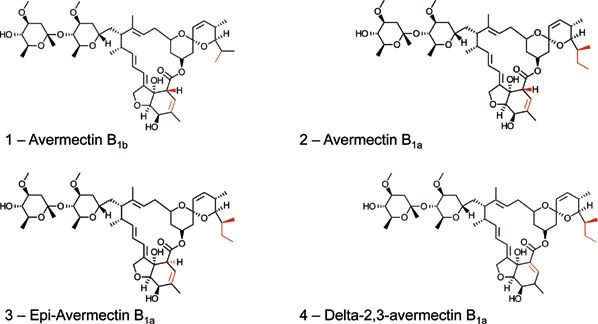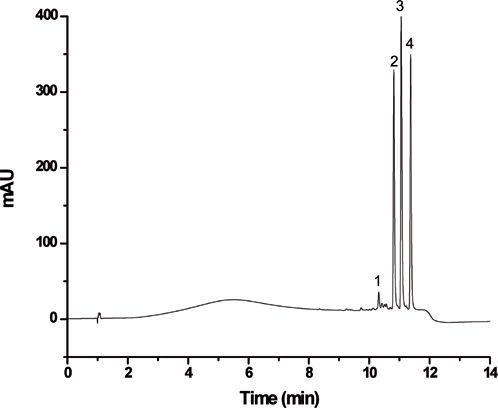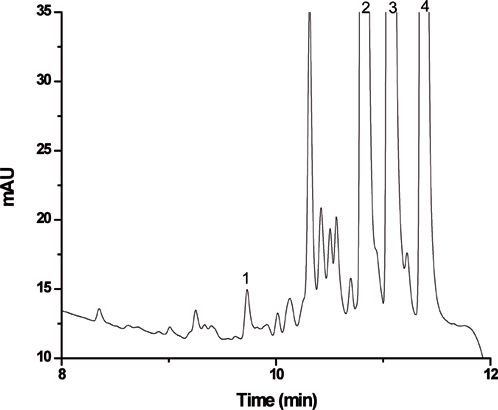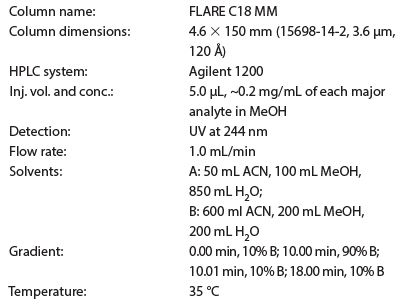Separation of Macrocyclic Lactones
The Application Notebook
Avermectins are a series of 16-membered macrocyclic lactone derivatives that are used extensively in animal and crop protection.
Avermectins are a series of 16-membered macrocyclic lactone derivatives that are used extensively in animal and crop protection. They occur in nature and can be produced as fermentation by-products by the micro-organism, streptomyces avermitilis. Examples of well-known avermectins and derived products include ivermectin, eprinomectin, selamectin, doramectin, and abamectin. All the avermectins have high anthelmintic and insecticidal properties even at low dose levels and residues of these veterinary drug components reach the environment through manufacturing and animal waste and may potentially affect terrestrial and aquatic life forms.

Figure 1: Structures of selected macrocyclic lactones.
Several crop protection companies have strong interest in the synthesis, production, and analysis of these compounds. Therefore, there exists a need to develop a fast and efficient analytical method capable of determining avermectin residues on animals, in food, and in the environment. The HPLC method presented here is fast and efficient and can be used for residual analysis as well as for quality control of avermectins in drug formulations. The peaks produced are sharp resulting in high sensitivity.

Figure 2: Separation of macrocyclic lactones using FLARE C18 MM column.
The mixture can be baseline separated using gradient elution with an MS-compatible mobile phase containing acetonitrile, methanol, and water. What is even more interesting is that the four avermectin products considered and up to 20 separate degradation products could be identified.

Figure 3: Exploded view showing peaks between 8 and 12 min.
HPLC Conditions

The FLARE C18 MM column is manufactured with 3.6 μm diamond core-shell particles that have 120 Å pores. The particle geometry and tight particle size distribution contribute to high packing density and column efficiency with reduced plate height, h, of ~2. The columns come in various lengths and diameters and are compatible with 100% aqueous to 100% organic solvents. They are pH and temperature stable and available to ship worldwide.

Diamond Analytics
11260 S 1600 W., Orem, UT
tel. (801) 235-9001, fax (801) 235-9141
Website: www.diamond-analytics.com

Fundamentals of Benchtop GC–MS Data Analysis and Terminology
April 5th 2025In this installment, we will review the fundamental terminology and data analysis principles in benchtop GC–MS. We will compare the three modes of analysis—full scan, extracted ion chromatograms, and selected ion monitoring—and see how each is used for quantitative and quantitative analysis.
Characterizing Plant Polysaccharides Using Size-Exclusion Chromatography
April 4th 2025With green chemistry becoming more standardized, Leena Pitkänen of Aalto University analyzed how useful size-exclusion chromatography (SEC) and asymmetric flow field-flow fractionation (AF4) could be in characterizing plant polysaccharides.
This information is supplementary to the article “Accelerating Monoclonal Antibody Quality Control: The Role of LC–MS in Upstream Bioprocessing”, which was published in the May 2025 issue of Current Trends in Mass Spectrometry.
















